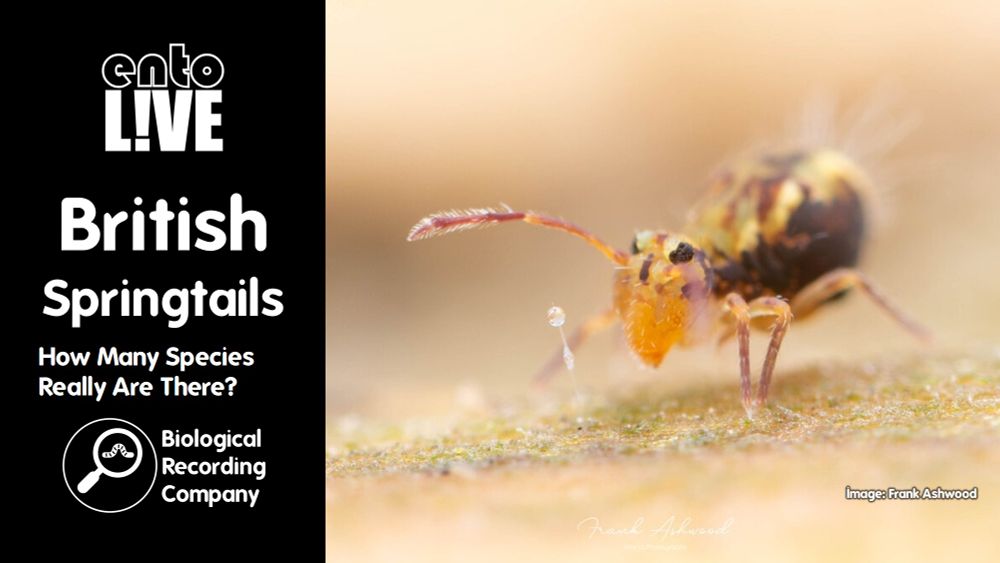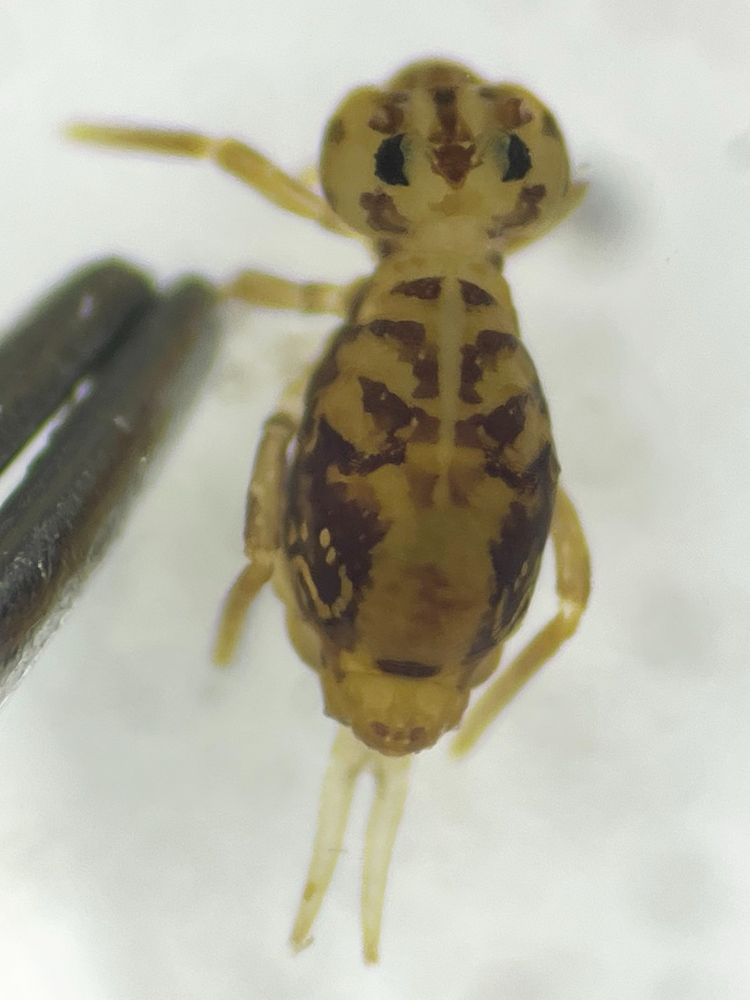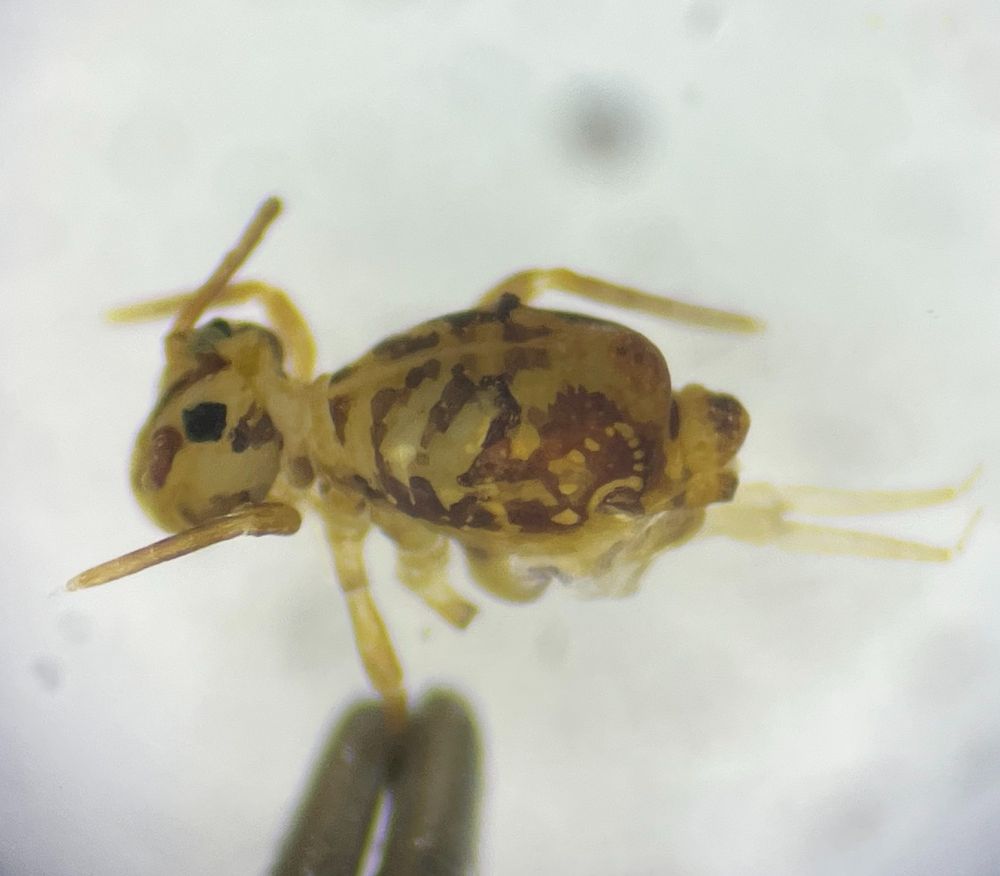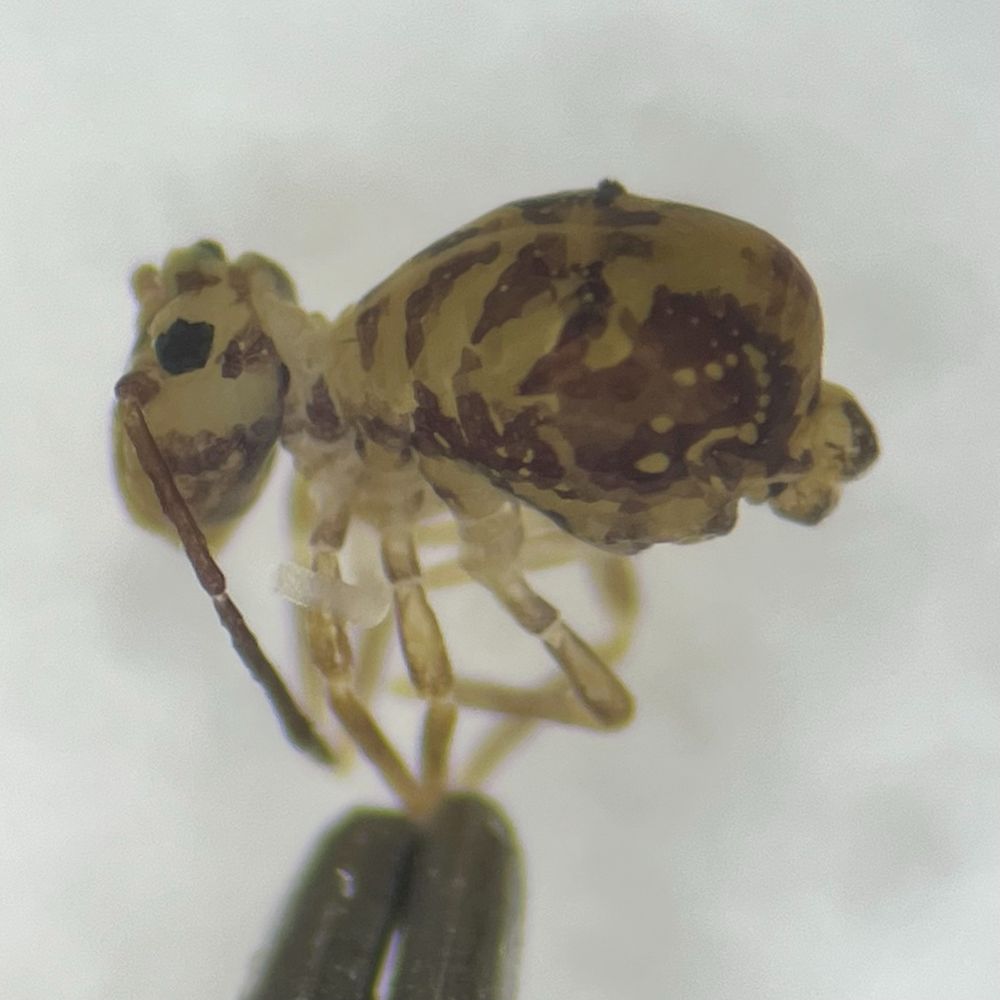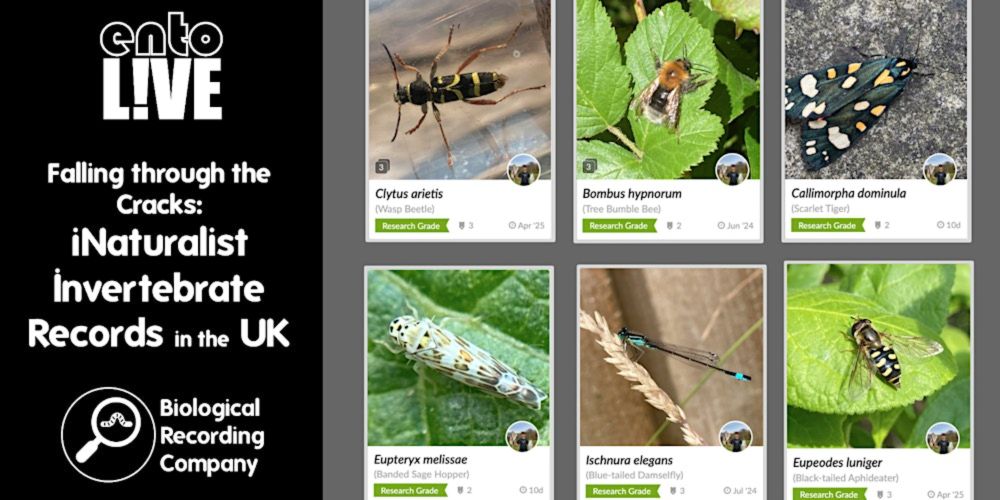
Falling through the Cracks: iNaturalist Invertebrate Records in the UK
Joss Carr discusses his MSc Research Project investigating the data quality of UK invertebrate records on iNaturalist.
I'm doing an online talk on 16/09 about my MSc thesis, which was all about iNaturalist data for invertebrates in the UK, and the alarmingly high proportion of it which 'falls through the cracks' due to data quality concerns. Please join if interested!
Link: www.eventbrite.co.uk/e/falling-th...
05.08.2025 10:24 — 👍 3 🔁 3 💬 0 📌 0
While the data are thin for signata and flavosignata, it’s the case that minuta, saundersi & ornata can be found under the same log. Despite apparent morphological identicalness, there could be other reasons they don’t outcompete each other, e.g. physiological/metabolic adaptations to different food
23.07.2025 06:39 — 👍 0 🔁 0 💬 0 📌 0
That's exciting! I'm on the look out for springtail samples from across the world for a future project - I'll direct message you!
17.07.2025 12:13 — 👍 0 🔁 0 💬 0 📌 0
View of Entomobrya petri sp. nov.: A new species of springtail found in the British Isles
Now that we have a name for this springtail, it is much easier for us to monitor its spread, analyse its interaction with the ecosystem, identify its origins, and study its populations & evolution through the lens of genomics.
Read the full description here: soil-organisms.org/index.php/SO...
16.07.2025 14:07 — 👍 2 🔁 1 💬 0 📌 0
A huge thank you to @persmiseth.bsky.social for showing me a population of these springtails when I was visiting Edinburgh earlier this year; some of them then became the type specimens. Also, Alex McDermott-Roberts and @jaiiiiiii1.bsky.social for providing specimens/photos from elsewhere.
16.07.2025 14:07 — 👍 1 🔁 0 💬 1 📌 0
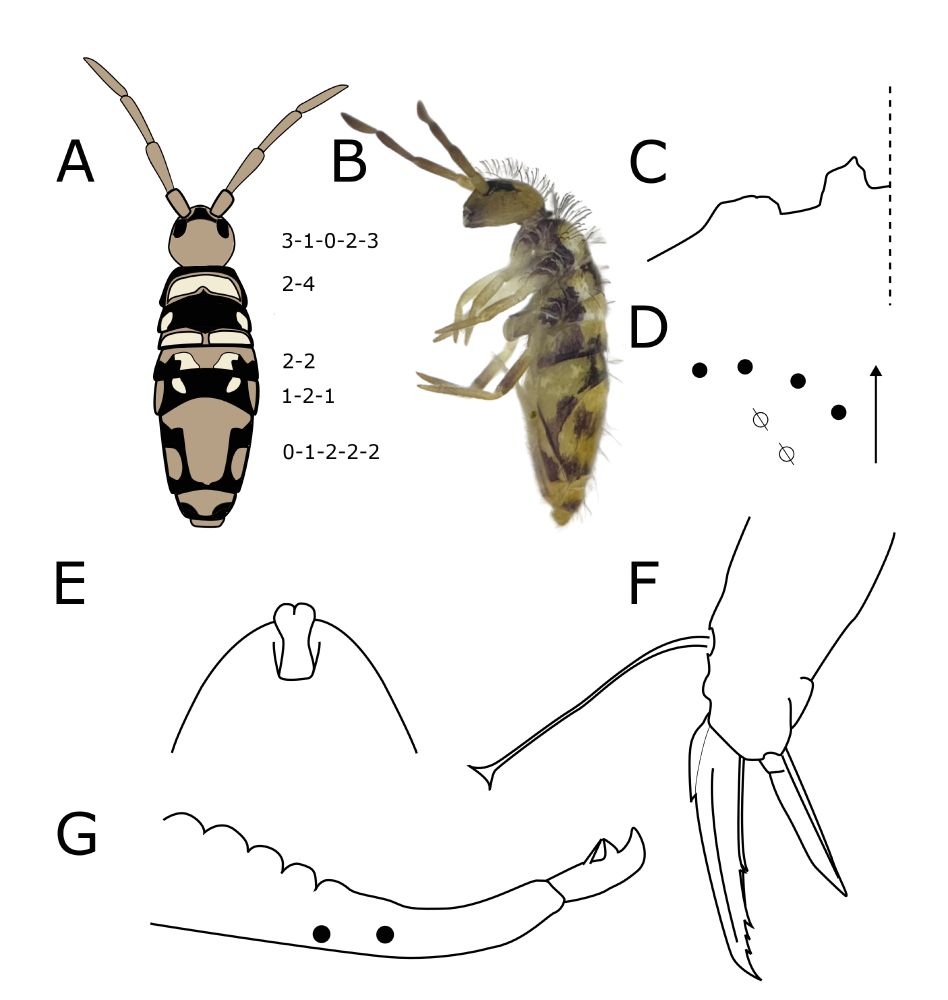
A composite of illustrations of different body parts. Elements A and B show the dorsal and ventral pattern respectively; to the right of the dorsal pattern illustration is the chaetotaxy formula for the relevant body segments. Each of the five most taxonomically useful segments in terms of their chaetotaxy - the head, the 2nd thoracic segment, and the 2nd, 3rd, and 4th abdominal segments - has between 2 and 5 somewhat arbitrarily-chosen "compartments" with the formula detailing the number of macrosetae (the thickest type of "hair") in each compartment.
Element C shows the configuration of a small part of the manubrium - the basal part of the furca (springing organ). This is a combination of pseudopores (two in this case - the open circles) surrounded by a number of setae (four here).
Element D shows the shape of the "apical bulb" at the very tip of the fourth antennal segment. E. petri has a bilobate apical bulb.
Element E shows the foot and the dentation of the claw - one of the ways in which E. petri differs from true E. imitabilis beyond colour pattern.
Finally, element F shows the apex of the dens and the mucro (the other two parts of the furca other than the manubrium). The mucro of E. petri has two teeth and a basal spine which reaches the tip of the basal tooth.
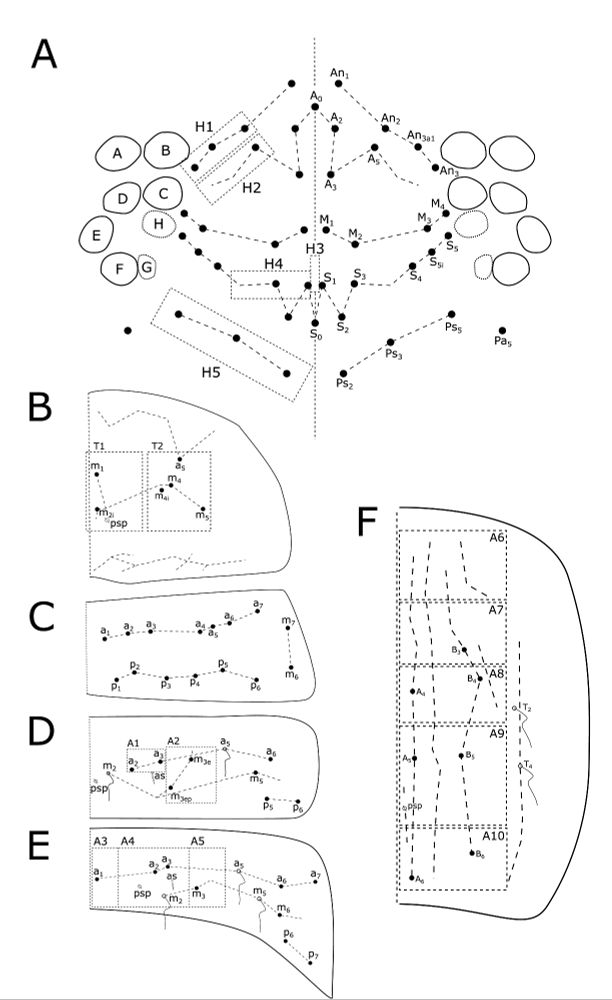
This rather complicated looking figure provides the chaetotaxy (arrangement of setae (hairs)) for the taxonomically important body segments. These are the head, 2nd and 3rd thoracic segments, and 2nd, 3rd, and 4th abdominal segments (in order from A-F). The diagram of the head also includes the relative size and position of each ocellus which makes up the eye.
The dotted boxes delimit the "compartments" of each segment, which is how you get the standard chaetotaxy formula as given in the other figure.
This chaetotaxy scheme was first introduced by Jordana in his 2012 volume of the Synopses on Palaearctic Collembola, which covers the subfamily Capbryinae and tribe Entomobryini of the family Entomobryidae. The chaetotaxy of any of the members of these groups should, in theory, be able to be represented using this scheme.
While it appears similar to true E. imitabilis, described from a single Chinese specimen, the pattern of E. petri is unique. The chaetotaxy - the arrangement of hairs (setae) on different parts of the body - is also unique.
Click the Alt text on these images for explanations of what they depict!
16.07.2025 14:07 — 👍 2 🔁 1 💬 1 📌 0
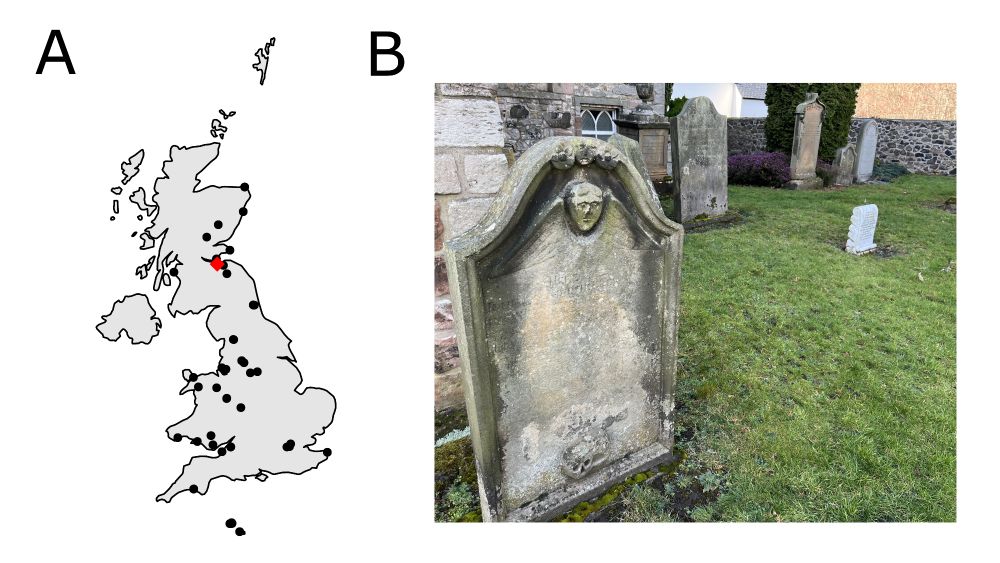
Formerly known as Entomobrya nr imitabilis, this morphospecies was first spotted in 2015. Since then it has appeared across the whole length of the British Isles - the type specimens were found on an Edinburgh gravestone. Where it has come from and how it has spread so quickly is a mystery...
16.07.2025 14:07 — 👍 1 🔁 1 💬 1 📌 0
I'm so excited to share that this springtail, one that seems to have rapidly appeared in graveyards and gardens across the UK, now has a proper name: Entomobrya petri!
I hope this will be the first of many new species descriptions, allowing us to track our rapidly changing springtail fauna. 🧵⬇️
16.07.2025 14:07 — 👍 40 🔁 10 💬 6 📌 1
That would be very useful - it'd be ideal to make sure I'm not missing any records! Thanks!
15.07.2025 15:06 — 👍 1 🔁 0 💬 0 📌 0
This coming Tuesday lunchtime!
I’m looking forward to talking springtails, speciation, and cryptic diversity.
Sign up! ⬇️
11.07.2025 09:27 — 👍 8 🔁 3 💬 0 📌 0

A photograph of a springtail spermatophore: a thin transparent stalk with a glob of clear fluid on the top.
Yesterday we had earthworm cocoons, today I bring you springtail spermatophores!
Springtails, like many soil invertebrates, reproduce by a male leaving these structures (sperm-rich fluid on a stalk), which the female will sniff out and collect to fertilise her eggs. Romantic!
#SoilBiodiversity 🧪
10.07.2025 06:28 — 👍 92 🔁 21 💬 4 📌 2
Wow, that's a blast from the past!
24.05.2025 13:42 — 👍 1 🔁 0 💬 0 📌 0

British Springtails: How Many Species Really Are There?
James McCulloch (National Springtail Recorder) discusses the constantly increasing species list for UK Collembola.
British Springtails: How Many Species Are There?
Join @jamesimcc.bsky.social on 15 July as he reveals how genome data and citizen science are rewriting UK biodiversity.
🎟️ Book FREE: www.eventbrite.co.uk/e/1359900281...
@royentsoc.bsky.social @fieldstudiesc.bsky.social @nbntrust.bsky.social 🌱 🌍 🧪
09.05.2025 09:38 — 👍 7 🔁 2 💬 0 📌 0
Nice spot! I would put it down as a species of Bourletiellidae. I associate these springtails with spring!
01.05.2025 16:27 — 👍 2 🔁 0 💬 1 📌 0
How bizarre. I can’t offer an opinion without microscopy, but it’s striking.
27.04.2025 14:28 — 👍 1 🔁 0 💬 1 📌 0
Ha! Now that’s worthwhile seeing!
27.04.2025 14:27 — 👍 0 🔁 0 💬 1 📌 0
Thanks also to @kitenet.bsky.social and @robin-hutchinson.bsky.social for setting up the data partnership!
21.04.2025 09:51 — 👍 3 🔁 0 💬 0 📌 0
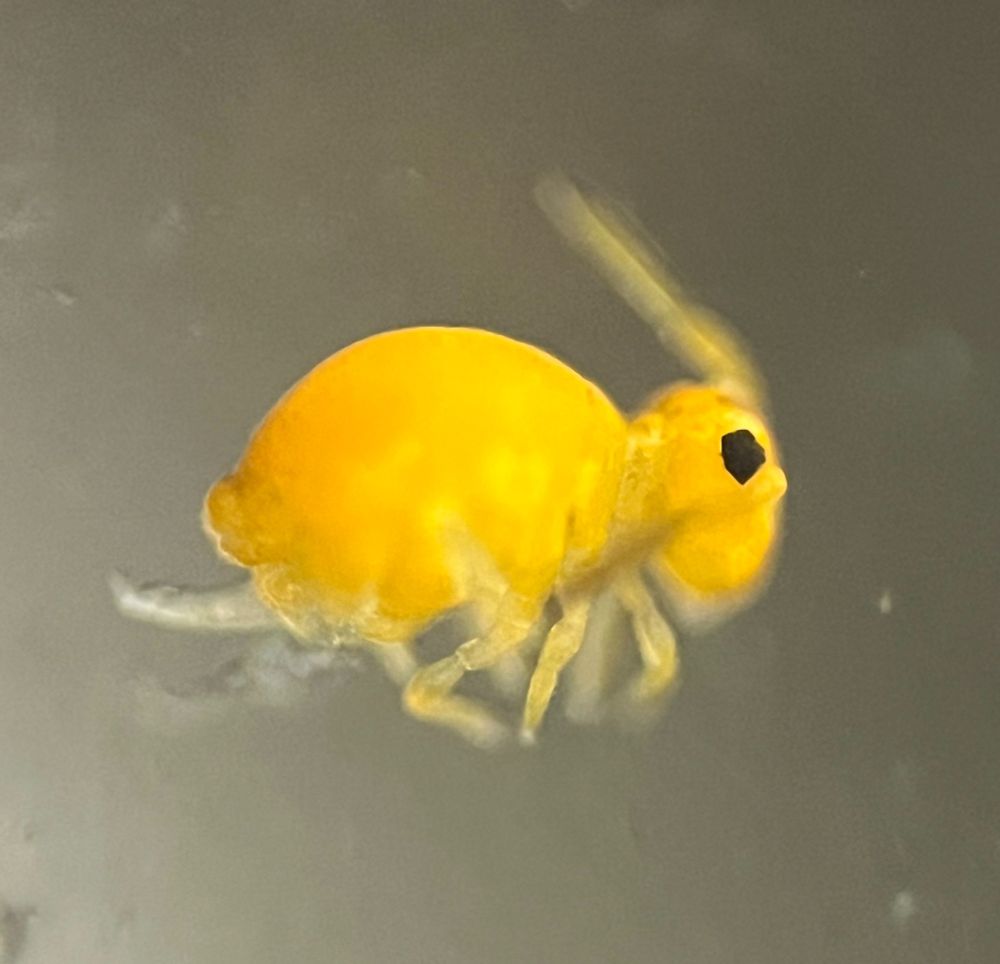
A particularly luminous individual of Sminthurinus aureus (orange form)
Good news! >6000 springtail records have been imported from iRecord and are now available on the NBN Atlas: species.nbnatlas.org/species/NBNS...
Massive thanks to @duerden.bsky.social for his investment in verifying iRecord records.
Keep them coming!
21.04.2025 09:51 — 👍 28 🔁 1 💬 2 📌 0
Further, D. signata is a continental European species (although it may also be an overlooked British native), where it exists alongside the species currently known from Britain. Although, it doesn't appear too common anywhere in its range.
19.04.2025 20:42 — 👍 0 🔁 0 💬 1 📌 0
What is intriguing about Dicyrtomina is that the "species" appear to be morphologically identical beyond colour pattern, yet are often found in coexistence without out-competing each other. How this is the case is a mystery, but there's nothing to suggest D. signata is not equally innocuous!
19.04.2025 20:39 — 👍 0 🔁 0 💬 2 📌 0
This species can be distinguished from D. saundersi and D. ornata by the combination of having very little pigment/only fine barring on the "posterior patch", except for occasionally a dark spot just above the "small abdomen" (abd 6), plus the lack of a colour change between antennal segments 2 & 3.
13.04.2025 17:54 — 👍 9 🔁 0 💬 2 📌 0
My guess would be a combination of extra food and protection from predatory mesofauna as well! But there is lots we don’t know about these creatures…
12.04.2025 19:58 — 👍 1 🔁 0 💬 0 📌 0
I would vote for Pseudosinella alba! Just a coincidence that it’s in an ant nest, I would imagine. Great photos! Heteromurus nitidus looks similar, but I think I can just make out tiny black ocelli, rather than red.
Looking forward to the E. nr imitabilis 😀
11.04.2025 17:27 — 👍 1 🔁 0 💬 1 📌 0
And that's my 4th record of Entomobrya nr. imitabilis (See below), this time right from the garden! Beautiful little species, waiting anxiously for updates...
31.03.2025 16:24 — 👍 5 🔁 1 💬 0 📌 0
I wouldn't be comfortable with it at the moment, I'm afraid! I think I'd need to observe presence/absence of that feature + characteristics of the dental spines in many specimens to have more confidence. Hard because need to observe the scales in life. But a good project for the future!
27.03.2025 21:04 — 👍 1 🔁 0 💬 0 📌 0
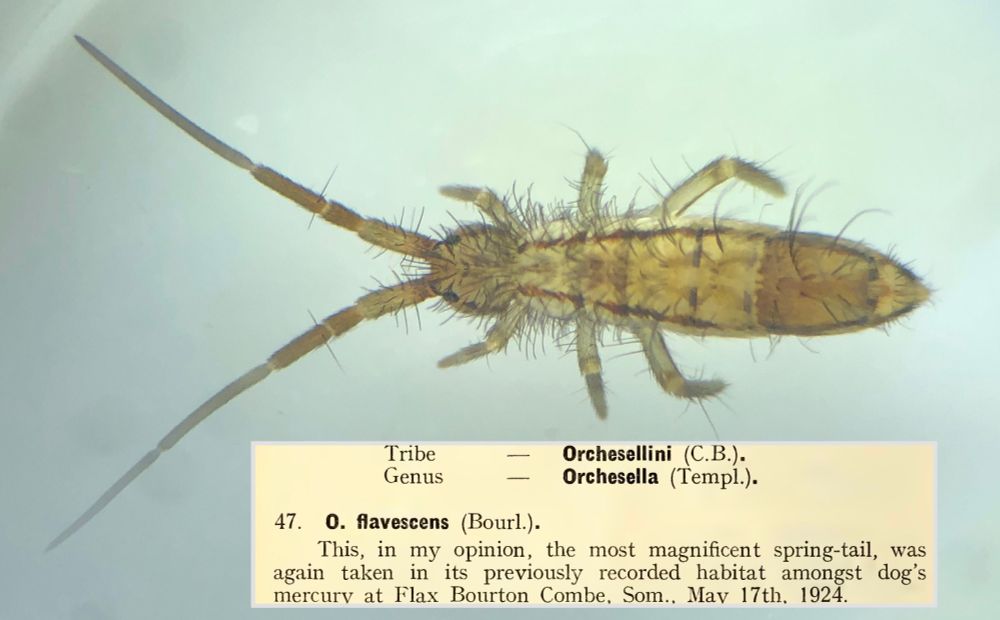
In 1924, Womersley referred to Orchesella flavescens as "the most magnificent spring-tail". Today, 101 years later, the first reference genome for this species has been assembled and published, from a specimen I collected at Wytham Woods!
wellcomeopenresearch.org/articles/10-...
18.03.2025 13:27 — 👍 21 🔁 2 💬 1 📌 1
Stunning picture! Katianna nr schoetti indeed!
01.03.2025 16:47 — 👍 2 🔁 0 💬 1 📌 0
It's hard to know for sure, but the main reasoning is its recent appearance among UK Collembola records despite intense recording in the past. Entomobrya imitabilis itself is described from China (though there was one specimen, which is now lost...)
28.02.2025 18:08 — 👍 2 🔁 0 💬 0 📌 0
Wildlife artist and ecologist based in Buckfastleigh, Devon, UK
The place where your nature photos impact science & conservation around the world. Free, nonprofit, & community-powered. 🪲🐌🌿
Springtail enjoyer.
Amateur investigator of British Columbia Dicyrtomids and whatever else I can find
PhD student with Mara Lawniczak and Mark Blaxter | Tree of Life | Wellcome Sanger Institute | University of Cambridge | Palestinian & Italian
Shining a spotlight on the importance of monitoring wildlife and ecological research, with a focus on the groups that get less attention. 🍄🪱🪲🕷️🐌🪼🦈
Posts by Keiron Derek Brown
A lover of chromosome biology 🧬🔬🔎 Studying (not only) meiosis, centromeres & genome evolution in plants!
Group leader at MPI for Plant Breeding Research in Cologne, Germany
Lab website:
https://www.mpipz.mpg.de/5028512/marques
Chromosome biology, evolutionary genetics, sex chromosomes, holocentric chromosomes, meiosis, butterflies,...
I like plants. Lecturer on plant genetics and ecology at Anglia Ruskin University. Views my own.
Amateur Naturalist interested in Snakes, Coleoptera, Lepidoptera and recently Collembola (and all the other critters I can find)
https://www.inaturalist.org/people/murderspagurder
🦜 PhD student at Durham studying avian species interactions and their impact on coexistence and range dynamics 🦆 Birder & C-permit Ringer 🐦⬛ He/Him 🦩
Official account of the journal Soil Organisms published by Senckenberg @sgn.one. Posts include news and articles contained in issues of the journal and communications from the editors. Latest Issue: https://soil-organisms.org/index.php/SO
Postdoctoral Fellow at WSI, Jaron Group and Tree of Life; biodiversity and evolution of germ-line restricted chromosomes in flies
Photographer, Bug Nerd, Woke Leftie, Wannabe Expert, etc.
———————————————————
Mainly collembola enthusiast
——————————————
📌 Greater Manchester
A fully open-access journal covering all aspects of evolutionary biology research!
Homepage: https://academic.oup.com/evolinnean
Blog: https://www.linnean.org/news/categories/the-paper-trail
DPhil at @biology.ox.ac.uk | Cichlids, Somitogenesis, and Evolvability | Lepidoptera and Birds | jewh.github.io | #embryo2024
🌿🦋Documenting the diversity of life through systematics research🪰🦎
📃Our manuscripts:
https://www.tandfonline.com/journals/tsab20
🏛️We're based at the Natural History Museum, London:
https://www.nhm.ac.uk/business-services/publishing/Journals
An international Zoological journal covering systematic & evolutionary research from species both alive and extinct 🐆🦋🪲🦇🦕
Homepage: https://academic.oup.com/zoolinnean
Blog: https://www.linnean.org/news/categories/the-paper-trail
🔬 Evolutionary genetics/genomics, repeated adaptation, 🌸 pigmentation, 🏔️ alpine environment, polyploidy
MSCA fellow at Charles Uni 🇨🇿 and Uni Bern🇨🇭
X @MajdaHolcova
Working towards a world where nature is understood, valued and protected.
https://www.linnean.org/




